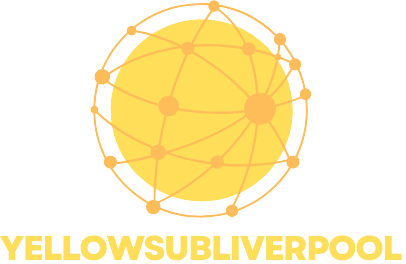Table of Contents
ToggleIn today’s fast-paced world, keeping employees engaged can feel like trying to catch confetti in a windstorm. But fear not! Digital tools are here to save the day, transforming the workplace into a vibrant hub of collaboration and creativity. It’s like giving your team a superhero cape—suddenly, they’re ready to tackle challenges head-on.
Understanding Employee Engagement
Employee engagement refers to the emotional commitment individuals have toward their organization. Engaged employees demonstrate high levels of motivation and loyalty, leading to increased productivity and better retention rates. Various factors contribute to this commitment, including a supportive work culture, opportunities for professional development, and effective communication.
Active participation in organizations improves employee satisfaction. Techniques such as feedback loops and recognition programs foster a sense of belonging. Studies indicate that organizations with high engagement levels see up to 21% greater profitability. Engagement not only benefits employees but also enhances overall company performance.
Digital tools play a crucial role in promoting employee engagement. Platforms for collaboration simplify communication and task management. Utilizing instant messaging or project management software connects teams, ensuring everyone stays aligned. Furthermore, survey tools gather employee feedback, allowing organizations to respond to their concerns promptly.
Effective onboarding processes also contribute significantly to engagement. Utilizing digital resources, new employees acclimate faster, understanding their roles and the company culture. When employees feel welcomed and valued from day one, their commitment deepens.
Additionally, training programs that leverage technology provide opportunities for skill enhancement. Online learning modules give employees access to resources relevant to their career growth. By investing in employee development, organizations signify their commitment to their workforce, encouraging loyalty and engagement.
Understanding employee engagement requires recognizing its importance in organizational success. Engaged employees enhance productivity and retention, while digital tools pave the way for effective communication and development.
Importance Of Digital Tools For Employee Engagement

Digital tools play a pivotal role in enhancing employee engagement. They streamline processes, boost performance, and foster a culture that values interactivity.
Enhancing Communication
Communication thrives with digital tools that bridge gaps across teams. Instant messaging platforms allow for real-time dialogue, encouraging employees to share ideas swiftly. Video conferencing solutions enable face-to-face interactions, even from afar, reinforcing connections regardless of location. These tools facilitate clear information sharing, reducing misunderstandings and improving overall morale. Regular feedback channels help employees voice concerns and celebrate achievements. Increased responsiveness from management cultivates a supportive atmosphere. Organizations leveraging these tools report a 25% increase in employee satisfaction. A seamless communication flow leads to higher engagement levels, ultimately driving company success.
Fostering Collaboration
Collaboration becomes more effective through the use of digital tools. Project management software provides transparency in tasks, ensuring everyone knows their roles and deadlines. Team members contribute to shared documents simultaneously, enhancing productivity and creative input. Workflow automation tools simplify repetitive tasks, allowing employees to focus on strategic initiatives. Engaging in cross-departmental projects encourages diverse perspectives and innovation. Enhanced collaboration tools lead to improved problem-solving and decision-making processes. Companies that prioritize collaborative technology often see a rise in employee engagement by 30%. By creating an environment where teamwork flourishes, organizations unlock their full potential.
Types Of Digital Tools For Employee Engagement
Digital tools for employee engagement serve various functions, enhancing the workplace experience. Understanding these tools helps organizations leverage them effectively.
Collaboration Platforms
Collaboration platforms facilitate teamwork by allowing employees to communicate in real-time. These tools include platforms like Slack and Microsoft Teams, which enable seamless messaging. Teams utilize shared documents and project management features to maintain clarity. Task assignment features improve workflow organization and accountability, promoting a sense of ownership among employees. Companies reporting a 30% increase in engagement often credit these collaborative environments for their success. Enhanced interaction through video conferencing adds a personal touch, strengthening team bonds.
Feedback Tools
Feedback tools gather employee opinions and insights on various aspects of the workplace. Platforms such as SurveyMonkey and TINYpulse allow organizations to obtain real-time feedback. Collecting employee input fosters a culture of openness, ensuring voices are heard. Regular pulse surveys facilitate understanding of employee sentiment and morale. These tools contribute to improving job satisfaction, as organizations that implement feedback mechanisms see a 21% increase in retention rates. Acting on feedback demonstrates commitment to employee development, encouraging ongoing participation.
Recognition Software
Recognition software enhances appreciation by allowing peers and managers to acknowledge achievements. Tools like Bonusly and Kudos enable employees to celebrate milestones and contributions. Public recognition creates a positive atmosphere, reinforcing teamwork and motivation. Many organizations that utilize recognition software report higher levels of engagement and job satisfaction. By acknowledging individual and team successes, employers foster loyalty and enhance morale. Companies prioritizing recognition often experience a 25% boost in overall employee satisfaction. Such tools play a vital role in creating a supportive workplace culture.
Implementation Strategies
Effective implementation strategies are essential for maximizing the impact of digital tools on employee engagement. Organizations must prioritize understanding employee needs and selecting the most suitable tools for their environment.
Assessing Employee Needs
Understanding employee needs serves as the foundation of successful engagement strategies. Conducting surveys can gather insights about employees’ preferences, challenges, and expectations. Engaging in focus groups provides a platform for open dialogue, highlighting specific areas of concern. Analyzing feedback allows companies to identify patterns that inform their approach. Organizations that assess employee needs often see improved satisfaction and retention, often resulting in a 21% boost in engagement levels.
Choosing The Right Tools
Selecting the right tools involves evaluating various options based on organizational goals and employee preferences. Researching collaboration platforms, feedback tools, and recognition software plays a crucial role in this process. Organizations benefit from prioritizing tools that enhance communication and promote transparency. Identifying solutions like Slack for collaboration or TINYpulse for feedback fosters accountability and involvement. Companies that invest time in choosing appropriate digital tools can achieve a 30% increase in employee engagement, significantly contributing to overall success.
Measuring Effectiveness
Measuring the effectiveness of digital tools for employee engagement involves analyzing various metrics. Organizations often monitor employee satisfaction scores, as these directly reflect engagement levels. Improved retention rates serve as another key performance indicator, reinforcing the value of collaboration platforms and feedback tools.
Tracking participation in recognition programs reveals how well employees feel acknowledged for their contributions. Regular feedback surveys help assess the impact of tools like SurveyMonkey on fostering open communication. Companies that effectively implement these tools generally experience a 21% increase in retention rates.
Evaluating real-time communication effectiveness proves essential. Those using collaboration platforms like Slack reported a 25% increase in employee satisfaction. Increased usage of video conferencing tools also shows a clear connection to improved morale.
Setting specific engagement targets allows organizations to establish benchmarks. Comparing pre- and post-implementation levels can highlight areas of progress. Prioritizing employee feedback leads to more effective adjustments in the use of digital tools.
Tracking productivity levels provides insight into how well collaboration tools enhance team performance. Companies focusing on transparency in task management often report up to a 30% rise in employee engagement. Higher engagement typically correlates with improved organizational outcomes, reflecting the overall effectiveness of these digital solutions.
Finally, conducting regular reviews ensures that the chosen tools remain relevant. Adaptations based on employee preferences lead to sustained improvements in engagement levels. Focus on collecting data consistently so organizations can make informed decisions about their digital tools.
Embracing digital tools for employee engagement is more than just a trend; it’s a strategic necessity. Organizations that leverage these technologies foster a culture of collaboration and recognition, which directly enhances employee satisfaction and retention. By prioritizing effective communication and feedback, companies can create an environment where employees feel valued and connected.
The right digital tools not only streamline workflows but also empower employees to contribute meaningfully to their teams. As businesses continue to adapt to changing work dynamics, investing in these tools will be crucial for maintaining a motivated and engaged workforce. Ultimately, the commitment to employee engagement through digital means drives productivity and organizational success.







